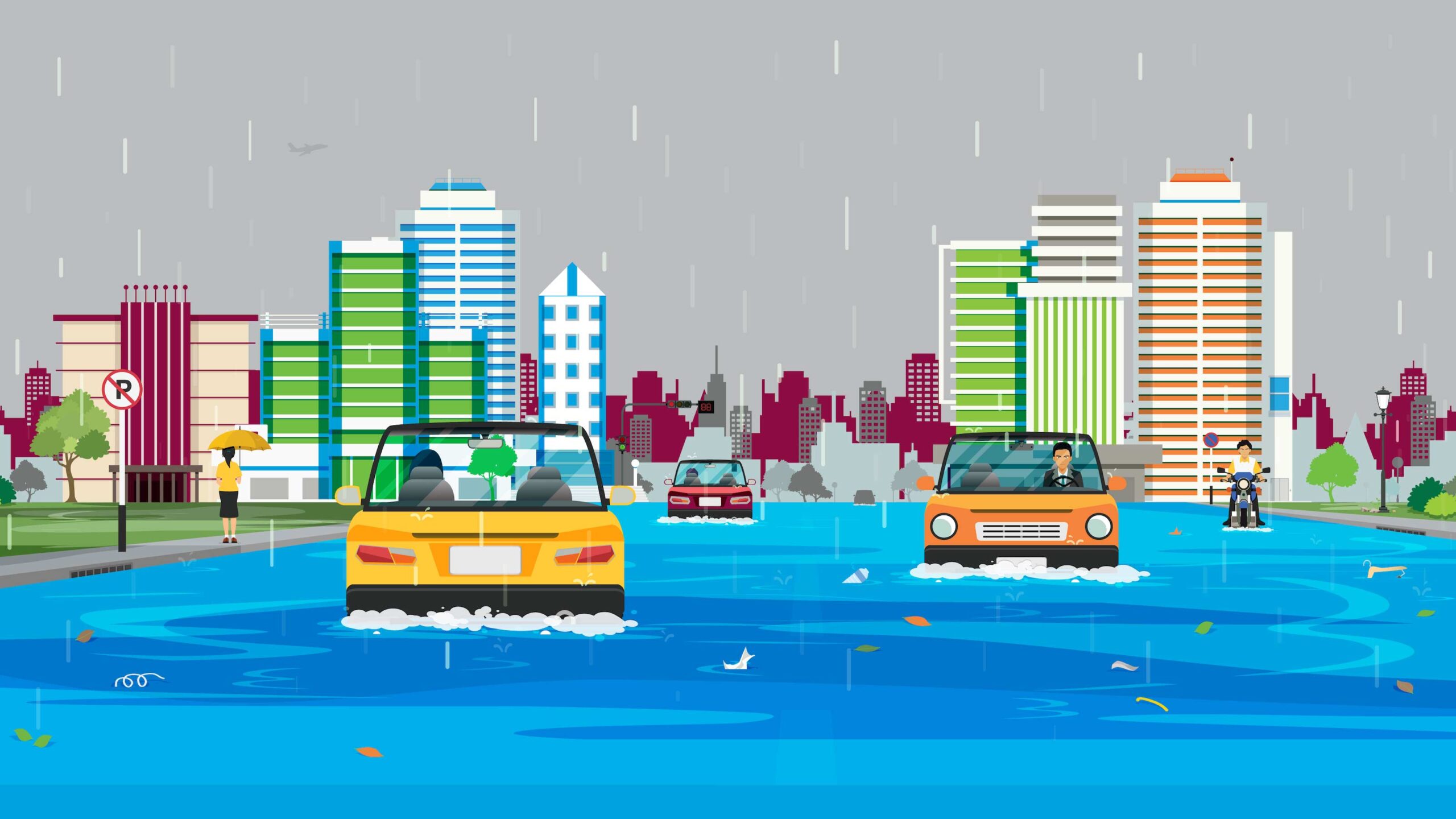
Designed to deal with disruption
ASU engineering research supports new national effort to make urban systems more adaptable and resilient

Above: The increasing frequency and severity of natural disasters and other societal disruptions have inspired a new National Science Foundation project to re-engineer urban systems in ways that better maintain public well-being and economic prosperity through future calamities. Researchers from the Ira A. Fulton Schools of Engineering at Arizona State University and peers at three other major institutions will collaborate to create tools that make society more adaptable before the unexpected happens. Illustration courtesy of Shutterstock
How can urban businesses and transportation systems demonstrate resiliency and deliver efficient service through significant disruptions such as a hurricane or a pandemic? What knowledge, mechanisms and tools are needed to design a truly adaptable society?
Answering these questions is the purpose of a new National Science Foundation project called “Re-engineering for Adaptable Lives and Businesses,” funded by the Leading Engineering for America’s Prosperity, Health and Infrastructure, or LEAP-HI, program.
Researchers from the Ira A. Fulton Schools of Engineering at Arizona State University, the University of Washington, the University of Notre Dame and the University of North Carolina at Charlotte will collaborate during the next four years to explore how key societal systems can switch between alternative operating modalities. They want to equip people with tools that will help them adapt to dramatic situations, while maintaining public well-being and economic prosperity.
“This project aims to develop systematic ways to reconfigure urban spaces and infrastructure for a variety of uses,” says Cynthia Chen, a professor of civil and environmental engineering at the University of Washington and LEAP-HI’s lead researcher.
“It will design mechanisms that provide business owners, and supporting infrastructure such as transit operators, with a set of options and decision support tools capable of accounting for future uncertainties,” Chen says. “We will explicitly model how information flows through a system so that people can adapt to external disruptions.”
The $2 million research effort seeks to advance knowledge at the intersection of multiple disciplines including urban planning, controls and optimization, human behavior and transportation systems analysis. Equally important, the project integrates people, businesses and transit into a network, thus enabling a better understanding of how society can adapt to different disruptions.
Two project case studies will address the vibrancy of small to mid-scale food systems in Phoenix and Seattle, focusing on challenges encountered by communities that include disproportionately large shares of frontline workers and public transit users.
“We saw that food systems such as restaurants and farmers markets were severely disrupted during the pandemic. Many of them had to close and people were out of work — especially among the marginalized communities most impacted by disruptions of this nature,” says Ram Pendyala, director of the School of Sustainable Engineering and the Built Environment, one of the seven Fulton Schools at ASU, and a co-leader of the LEAP-HI project.
“At the same time, food systems represent an adaptable enterprise. We saw the repurposing of sidewalks and street space for outdoor dining, ramping up take-out and delivery services and implementing social distancing in farmer’s markets,” Pendyala says. “It’s in this context that we see food systems as an adaptable system that connects key entities of interest: small businesses, frontline workers, transit services and marginalized communities.”
Pendyala and his peers also say the project takes account of our societal approach to efficiency. Maximizing efficiency has long been a driving force for economic growth and industrial expansion, but it often results in systems that are unable to adapt to external disruptions, as demonstrated by many natural disasters. There have been calls for increasing redundancy as a solution, but adding redundancies in systems design increases costs and resource demands.
“What is needed is an adaptable societal organization that can operate in a variety of configurations in response to a wide range of disruptions, thereby displaying both efficiency and resilience,” says Vijay Gupta, a professor of electrical engineering at the University of Notre Dame and a LEAP-HI project co-principal investigator.
Katherine Idziorek, an assistant professor of urban design and planning at the University of North Carolina at Charlotte, adds that achieving such adaptability demands considering how “our urban spaces and the regulations that are attached to them represent both constraints and opportunities in either prohibiting or enabling diverse functionalities.”
Pendyala says the availability of information about external conditions also plays a role in the way human activity patterns and mobility choices change in the wake of disruptions. Therefore, researchers supporting the project at ASU will develop predictive modeling frameworks and identify the human behaviors and choices that need to be modeled to meet the objectives of the project. They also will work with doctoral students at the four participating institutions to implement and apply the modeling system to test alternative scenarios.
“This is an exciting and timely project, given the increasing frequency of extreme events experienced by communities worldwide,” Pendyala says. “So, we look forward to engaging key stakeholders as we strive to advance more adaptable societal systems.”
Other key investigators on the LEAP-HI project team include Dan Abramson and Branden Born, associate professors of urban design and planning at the University of Washington, and Chaoyue Zhao, an assistant professor of industrial and systems engineering at the University of Washington.



































